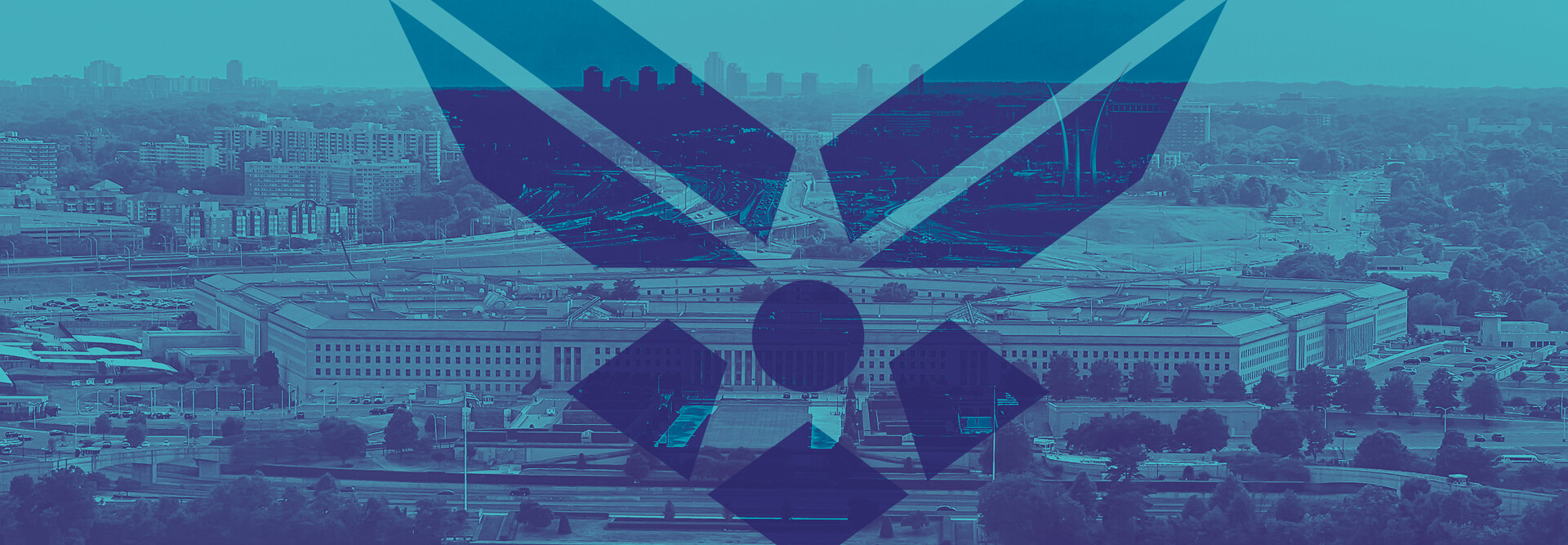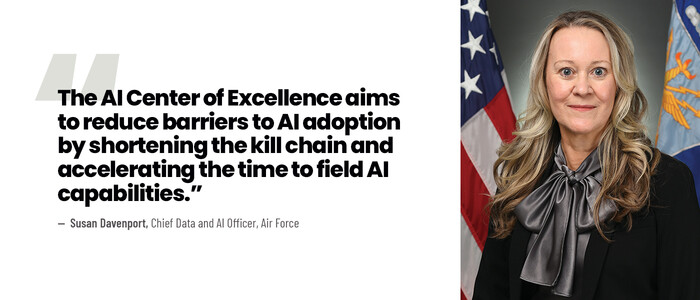FEDTECH: Have there been any big changes to Air Force AI policies and guidance, or are any on the horizon, in 2025?
DAVENPORT: In 2022, the Department of Defense released the Responsible AI Strategy and Implementation Pathway, and in 2023 it released the Data, Analytics, and AI Adoption Strategy. Since then, the White House has issued Executive Order 14179 and two memos on federal AI use from the Office of Management and Budget. These memorandums — OMB M-25-21 and OMB M-25-22, which supersede their predecessors M-24-10 and M-24-18 — have driven initial Air Force posture on AI policy, with a series of memos reinforcing DOD guidelines on responsible use of generative AI and requirements to track AI spend. These memorandums pioneer a way forward in the AI sphere, formally establishing and empowering the chief artificial intelligence officer and placing significant emphasis on the Chief Digital and Artificial Intelligence Office’s role as an AI champion, thereby breaking down barriers to adoption across the Air Force.
Furthermore, the Air Force intends to publish an AI policy directive later this year, following the release of the White House AI Action Plan, as well as a department manual on AI risk management in early 2026. These publications will draw from some of the insights outlined in the Air Force Doctrine Note on AI (AFDN 25-1), published by Air University.
RELATED: The Department of Energy’s FASST initiative aims to build an integrated scientific AI system.
FEDTECH: Are any new AI acquisition pathways being looked at?
DAVENPORT: The Air Force is actively leveraging DOD’s flexible acquisition pathways — such as those pioneered by AFWERX, the Defense Innovation Unit and other transaction authorities — to bring AI capabilities into the fight faster than traditional models allow. The AI Center of Excellence plays a central role in accelerating the transition of emerging technologies into operational use. By working closely with the requirements, acquisition and operational communities, the Center of Excellence ensures AI investments are aligned to real mission needs and can scale rapidly through appropriate pathways.
The AI Rapid Capabilities Cell — launched in 2024 by the Office of the Secretary of Defense’s Chief Digital and Artificial Intelligence Office and the Defense Innovation Unit — is advancing a new model for fielding generative AI, predictive analytics and autonomous capabilities in areas like warfighting, cyber defense and enterprise support functions. We are collaborating to shape the next generation of generative and enterprise AI offerings including secure AI/machine learning development environments and modular model integration and deployment across hybrid cloud infrastructure. These platforms are designed to operate across classification levels and enable real-time use at the edge, in the enterprise and across domains.
The Air Force is also embracing a diverse ecosystem of commercial AI offerings to foster innovation, reduce dependency on single vendors and accelerate delivery of mission-ready tools. These efforts support not just rapid acquisition but a broader transformation of how the Air Force develops, tests and fields AI at scale.
MORE FROM FEDTECH: Agency transformation calls for artificial intelligence-driven cyber defenses.
FEDTECH: What AI training initiatives are being pursued by the Air Force, and are there set goals for filling roles or upskilling personnel this year and beyond?
DAVENPORT: The Air Force provides a variety of readily available resources to the military and civilian workforce to build data and AI literacy, including through Air Force eLearning and Digital University, degree programs at the Air Force Academy and the Air Force Institute of Technology, and in partnership with MIT through the AI Accelerator program. The Chief Digital and Artificial Intelligence Office also sponsored a data-driven Leadership in AI course for Officer-6s/General Schedule-15s through Carnegie Mellon University earlier this year.
The Air Force awards Special Experience Identifiers to skilled data and AI members throughout the department using the Defense Cyber Workforce Framework process. The Defense Cyber Workforce Framework provides the structure and guidance that enables the Air Force and Space Force to develop and maintain a highly skilled cyber workforce. It helps airmen and guardians understand the skills they need to acquire, provides access to relevant training and education, and facilitates career progression within the cyber domain.
Additionally, through the adoption of the DOD GigEagle portal, the Air Force leverages “citizen coders” to place skilled airmen in available AI roles — encouraging nontraditional career paths while maximizing mission impact. The Air Force is committed to developing a workforce proficient in data and AI literacy, striving for a universal baseline competency for personnel. The department also continues to leverage direct-hire authorities for data scientists and intern pipelines to fill talent gaps.
UP NEXT: The Navy is finding cyber talent in fresh place.












